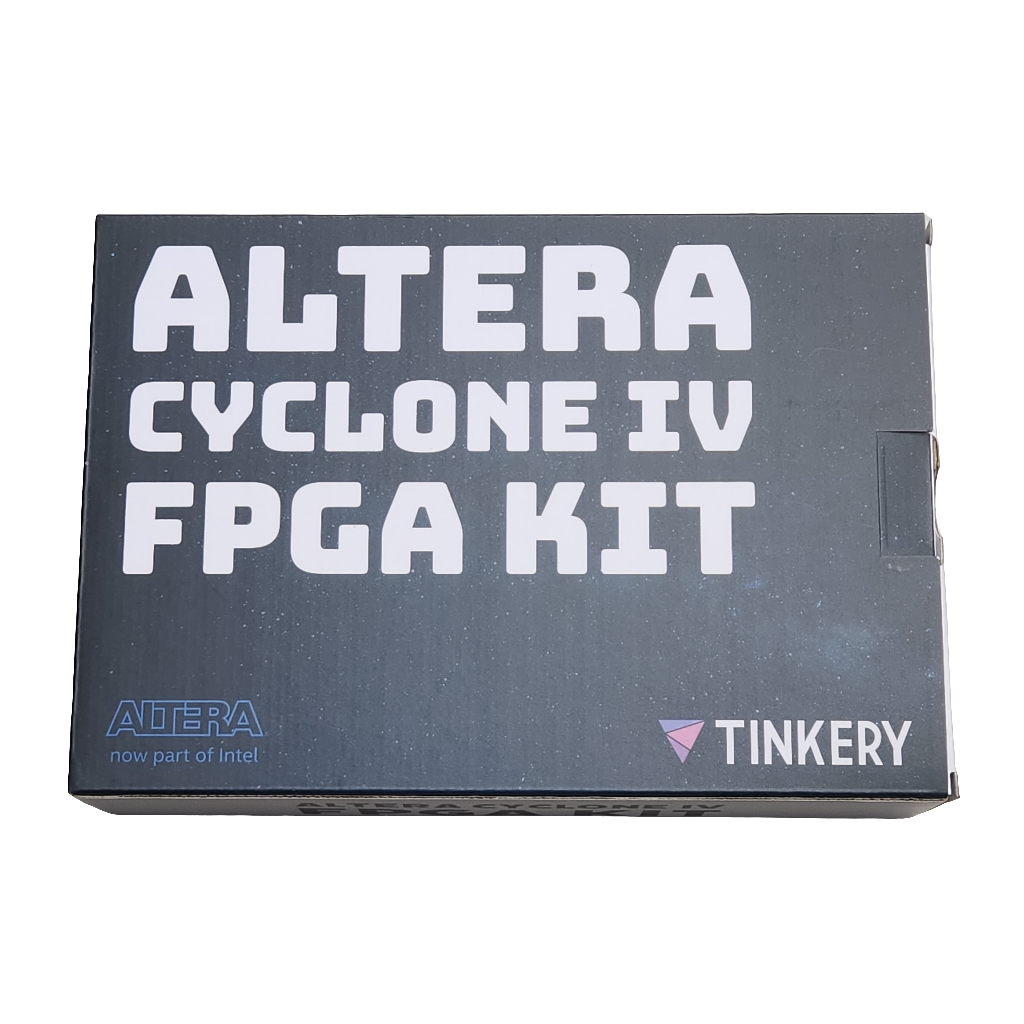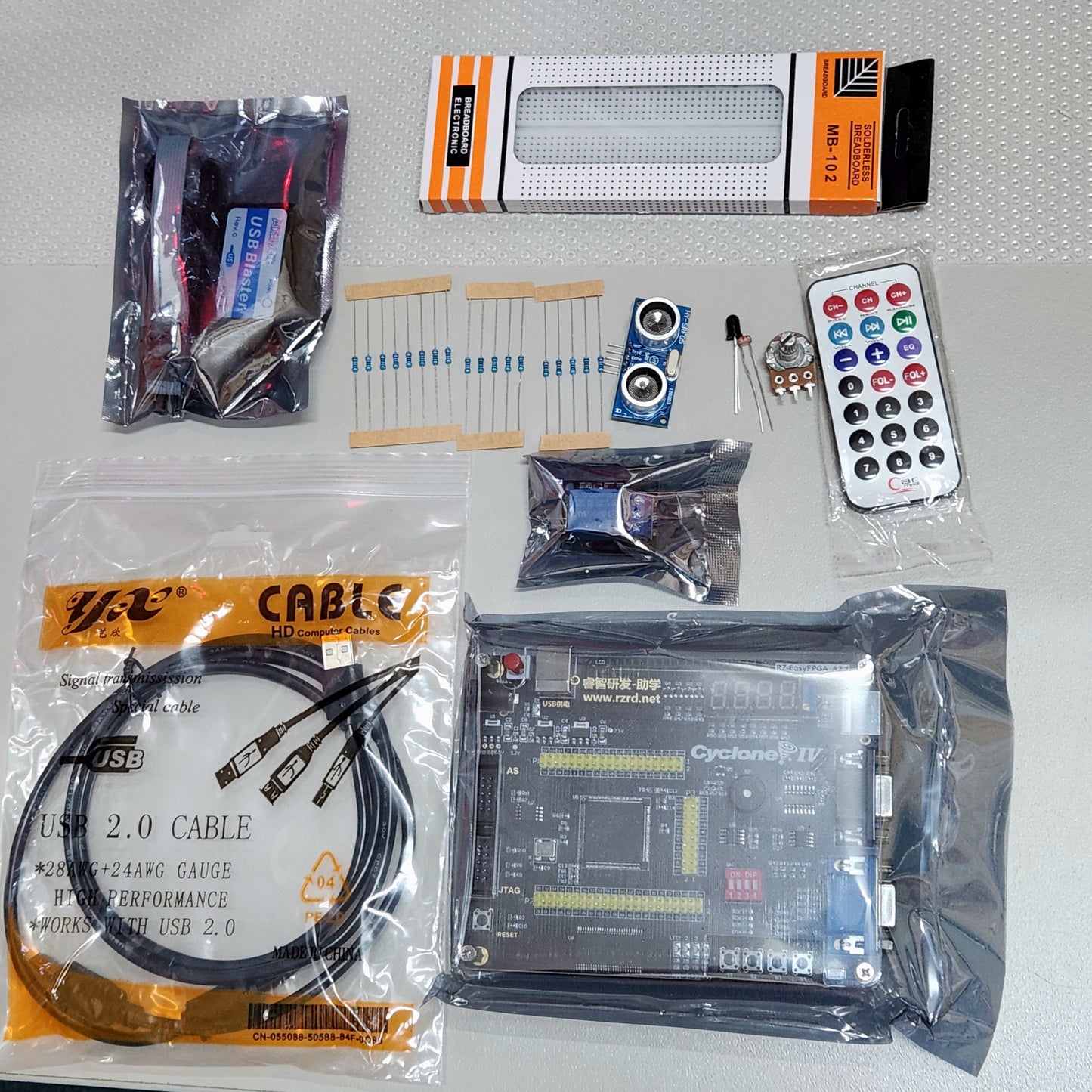Altera Cyclone IV FPGA Kit - Mechatronics Engineering - Kit Only
Altera Cyclone IV FPGA Kit - Mechatronics Engineering - Kit Only
SKU:ALTFPGAMXEXT
Couldn't load pickup availability
Share


-
Description
-
Contents
-
Specification
-
Operating Notes
-
Documentation
This FPGA Kit is a great way to learn to use Field Programmable Gate Arrays (FPGA) and digital logic circuits. This kit can be used together with the ST Micro Nucleo Board or the Uno RFID Kit for exploring inter-board communications between different embedded system architectures.
FPGAs are often selected for their reprogrammability, flexibility, and parallel processing capabilities - making them incredibly versatile. They can also be constructed to be radiation-tolerant, making them a popular choice for use in medical devices, space technologies, aerospace and defence products.
The Altera (Intel) Cyclone IV EP4CE6 included in this kit is an FPGA designed for use in commercial devices.
- Enhanced Logic/Memory
- 6272 logic Elements
- EQFP Package, 144-pin
- Commercial Temperature (Tj = 0oC - 85oC)
- Lead-free packaging
This kit contains:
- 1x OMDAZZ Altera (Intel) Cyclone IV EP4CE6E22C8N FPGA Prototyping Board
- 1x USB Blaster and cables (for programming the FPGA)
- 1x USB-A to USB-B cable (for powering the Cyclone IV)
- 1x 830-pin Breadboard
- 1x HY-SRF05 Ultrasonic Sensor
- 1x 50kR Potentiometer
- 1x Photoresistor (1MR to 60R)
- 1x Flame Sensor (YG1006)
- 1x 5V Relay Module (Keyes KY-019)
- 1x IR Remote (2xAAA batteries not included)
Power: DC 5V
Requires at least 2x USB ports (one for power, one for programming via USB Blaster (JTAG).
1. Power Supply Voltage to board must be regulated 5V DC. Exceeding this will damage your board, as there are no over-voltage nor reverse polarity protection circuits on the board.
Supply the external 5V DC power to the FPGA board using either the:
- Onboard USB Type B socket (socket is for 5V power only - data pins are not connected to anything, recommended for use with the included USB cable), or
- DC Power Jack with a 5V Regulated DC supply or powerpack. (Center/pin positive. Not recommended for inexperienced users.)
Select power source using red toggle push button (Down = USB socket selected, Up = DC Power Jack). If only using one power source, the red toggle button can act as a power switch for the FPGA board.
2. Do not plug/unplug USB Blaster while FPGA Board is externally powered. This can induce voltage spikes into the programming pins which will damage the FPGA chip. switch off and unplug the FPGA Board first before plugging in or unplugging the USB Blaster.
3. Ensure that the Intel Quartus Prime Lite install path does not have spaces (i.e. any of the folders that are above the Intel Quartus Prime Lite installation cannot have spaces). This is known to cause issues with Intel Quartus Prime Lite and other versions, and is why it is not recommended to be installed in "C:/Program Files".
- Altera Cyclone IV - Device Family Overview
- Altera Cyclone IV - Datasheet
- Intel Quartus Prime Lite Installer (v23.1) - Ensure you have selected to include the Cyclone IV tools during the install. Once Intel Quartus Prime Lite v23.1 has finished installing, install the USB Blaster drivers using the installer included in Intel Quartus Prime Lite v23.1 (C:\intelFPGA_lite\Quartus\Drivers)
- GitHub for compiled documentation and example code by Julius Vitkauskas: https://github.com/jvitkauskas/Altera-Cyclone-IV-board-V3.0
To run example code, connect USB Blaster and FPGA. Then, open Programmer (included with Quartus Prime Lite installer). Ensure USB-Blaster is selected as hardware (programming over JTAG), and click "Add files...", and select the .sob file in any examples you want to try. Remember to remove each file when testing between example files.


